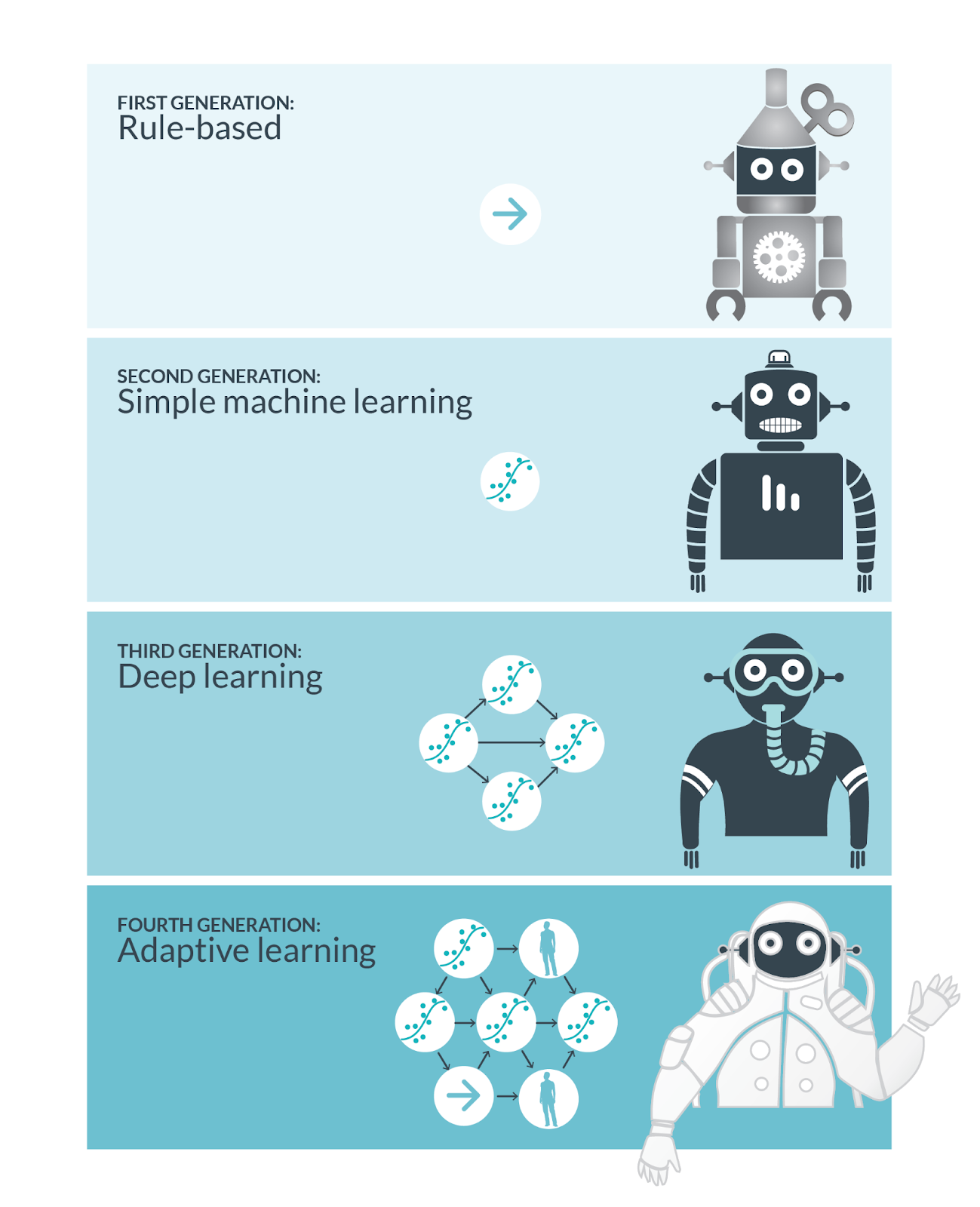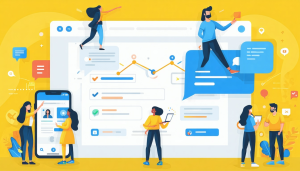Discover how Adaptive Learning Intelligences and machine learning are transforming education by creating personalized pathways, enhancing engagement, and improving learning outcomes.

Introduction: The New Era of Education
Education has always been about growth. Traditionally, learners followed a linear path, progressing at a uniform pace. Today, learners are diverse, with unique skills, interests, and learning styles. The one-size-fits-all approach is no longer effective.
Enter Adaptive Learning Intelligences, powered by machine learning (ML) and artificial intelligence (AI). These technologies revolutionize education by creating personalized pathways, tailoring content to each learner’s needs, and optimizing outcomes. Adaptive learning doesn’t just teach—it learns from the learner.
This article explores how machine learning is reshaping personalized education, the mechanics of adaptive learning systems, and the benefits and challenges of implementing these transformative technologies.
-
Understanding Adaptive Learning Intelligences
-
The Role of Machine Learning in Personalization
-
Key Components of Adaptive Learning Systems
-
Data Collection & Analysis
-
Dynamic Content Delivery
-
Learner Feedback Loops
-
-
Designing Personalized Education Pathways
-
Benefits of Machine Learning-Driven Adaptive Learning
-
Challenges and Ethical Considerations
-
Case Studies: Adaptive Learning in Action
-
Future Trends in Personalized Education
-
Conclusion: The Path Forward
Education is experiencing its most profound transformation since the invention of the printed book. In a world defined by velocity, complexity, and limitless digital possibility, learning can no longer remain linear, standardised, and uniform. Today’s learners are diverse in cognition, pace, motivation, cultural context, and intellectual rhythm — and the age of machine-learning-powered adaptive education has emerged to answer that reality.
We are transitioning from traditional curriculum delivery to intelligent learning systems that evolve with the learner. These systems do not simply distribute content — they observe, interpret, and respond to each student’s needs, in real time, crafting pathways as unique as fingerprints. This is not EdTech evolution; it is an educational renaissance powered by AI, data science, behavioural analytics, and cognition-aware engineering.
Welcome to the era of Adaptive Learning Intelligences — where technology does not replace teachers, but empowers them, and where students experience learning not as a mandate, but as a personalised journey of mastery, curiosity, and capability building.
The End of One-Size-Fits-All Education
From Standardisation to Hyper-Personalisation at Scale
For centuries, education has been architected like industrial production: structured, linear, time-bound, and uniform. Learners of varying strengths were expected to move in lockstep, regardless of learning velocity or comprehension.
The results?
- Fast learners remain under-challenged
- Average learners navigate passively rather than purposefully
- Struggling learners fall behind, unheard and unseen
- Teachers are pressured to “cover content” rather than cultivate mastery
The world now knows something critical: humans do not learn in the same way — nor should they be expected to.
Machine-learning adaptive systems reinvent this paradigm by turning education into a dynamic, evolving, and deeply personalised experience. Instead of rigid pathways, we see intelligent learning maps that shift fluidly based on how a student engages, performs, behaves, and responds emotionally.
Education becomes not a broadcast — but a dialogue between learner and system.
Enter Adaptive Learning Intelligence
The Cognitive Engine Behind Personalised Mastery
Adaptive learning is not simply personalisation; it is precision education. It leverages machine learning models designed to continuously analyse:
- Learning speed
- Error patterns
- Knowledge retention
- Cognitive behaviour
- Motivation and engagement cues
- Time spent per topic
- Preferred content format (visual, textual, interactive, gamified, etc.)
- Emotional & attention patterns (in advanced systems)
Using this intelligence, the system autonomously adjusts:
- Content difficulty
- Learning sequence
- Practice frequency
- Feedback tone & level of detail
- Multimedia formats delivered
- Assessment style & flow
- Pacing and reinforcement schedule
It is education that thinks, adapts, and learns — not just the student.
How Machine Learning Builds Adaptive Pathways
Behind the Curtain of Intelligent Academic Orchestration
ML-driven adaptive systems employ a series of algorithms and models that act like cognitive architects:
| Adaptive Intelligence Capability | Engine/Model Type |
| Ability assessment & dynamic placement | Diagnostic + Bayesian mastery models |
| Real-time difficulty adjustment | Reinforcement learning |
| Predictive performance estimation | Regression models / LSTMs |
| Engagement & motivation scoring | Behavioural analytics + sentiment inference |
| Personalised content recommendations | Ranking + similarity models |
| Continuous feedback loop | Reward-penalty RL and performance-based tuning |
. Key Components of Adaptive Learning Systems
3.1 Data Collection & Analysis
Adaptive learning relies on data:
-
Interaction data: Clicks, answers, response times.
-
Performance metrics: Quiz and assignment scores.
-
Behavioral insights: Engagement patterns and time spent on topics.
This data is analyzed via ML models to guide content delivery and optimize learning outcomes.
3.2 Dynamic Content Delivery
Content adapts in real-time to each learner:
-
Simplified material for struggling students.
-
Advanced challenges for fast learners.
-
Multimedia formats—video, text, interactive exercises—based on preferences.
3.3 Learner Feedback Loops
Continuous feedback ensures learning is responsive:
-
Instant learner feedback on performance.
-
Content adapts based on feedback.
-
Teachers gain insights for targeted interventions.
4. Designing Personalized Education Pathways
Steps to create personalized pathways:
-
Set learning goals: Define outcomes for each learner.
-
Analyze learner profiles: Assess skills, knowledge, and interests.
-
Segment learners: Group based on similarities.
-
Deploy adaptive modules: Customize content paths with ML.
-
Measure outcomes: Continuously monitor and adjust pathways.
5. Benefits of Machine Learning-Driven Adaptive Learning
-
Enhanced Engagement: Dynamic content maintains motivation.
-
Improved Outcomes: Tailored pathways ensure mastery before progression.
-
Efficient Resource Allocation: Teachers focus on human intervention; AI handles routine delivery.
-
Scalability: Personalized learning for thousands simultaneously.
-
Data-Driven Insights: Educators gain actionable intelligence on learning effectiveness.
6. Challenges and Ethical Considerations

-
Data Privacy: Safeguard learner information.
-
Algorithmic Bias: Audit ML models to prevent unfair outcomes.
-
Teacher Integration: Train educators to utilize insights effectively.
-
Content Quality: Ensure personalized content remains pedagogically sound.
Ethical adaptive learning ensures technology enhances learning without compromising fairness or privacy.
7. Case Studies: Adaptive Learning in Action
DreamBox Learning (K-8 Math)
-
ML personalizes math lessons.
-
Adjusts difficulty in real-time.
-
Result: 30% improvement in student achievement.
Coursera Adaptive Pathways
-
AI recommends courses/modules based on performance.
-
Learners receive personalized study plans.
-
Result: Higher course completion and satisfaction.
8. Future Trends in Personalized Education
-
AI Tutors: 24/7 virtual learning assistants.
-
Predictive Analytics: Early detection of learning difficulties.
-
Gamification Integration: Motivational game-based learning.
-
Cross-Platform Learning: Seamless adaptation across devices.
-
Global Scalability: Cloud-based adaptive learning for underserved regions.
Machine learning will continue to make education smarter, more inclusive, and accessible.
9. Conclusion: The Path Forward
Adaptive Learning Intelligences powered by machine learning transform education from uniformity to personalization. Leveraging real-time data, predictive analytics, and dynamic content delivery allows learners to progress along personalized pathways that maximize engagement and outcomes.
Adopting adaptive learning is now essential for preparing students for a future demanding critical thinking, problem-solving, and lifelong learning. The combination of human guidance and AI promises a learning ecosystem where every student reaches their full potential.


